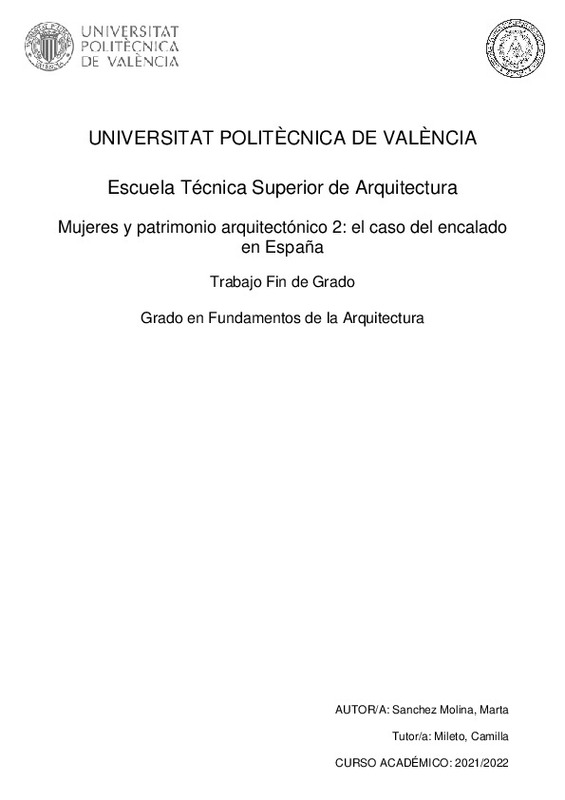JavaScript is disabled for your browser. Some features of this site may not work without it.
Buscar en RiuNet
Listar
Mi cuenta
Estadísticas
Ayuda RiuNet
Admin. UPV
Mujeres y patrimonio arquitectónico 2: el caso del encalado en España
Mostrar el registro completo del ítem
Sanchez Molina, M. (2022). Mujeres y patrimonio arquitectónico 2: el caso del encalado en España. Universitat Politècnica de València. http://hdl.handle.net/10251/190234
Por favor, use este identificador para citar o enlazar este ítem: http://hdl.handle.net/10251/190234
Ficheros en el ítem
Metadatos del ítem
| Título: | Mujeres y patrimonio arquitectónico 2: el caso del encalado en España | |||
| Otro titulo: |
|
|||
| Autor: | Sanchez Molina, Marta | |||
| Director(es): | ||||
| Entidad UPV: |
|
|||
| Fecha acto/lectura: |
|
|||
| Resumen: |
[ES] La historia del ser humano está fuertemente ligada a la historia de la arquitectura desde el punto de vista de las ideas, la cultura, la identidad, el uso, el gusto, etc. A lo largo de la historia de la humanidad, el ...[+]
[EN] The history of the human being is strongly linked to the history of architecture from the point of view of ideas, culture, identity, use, taste, etc. Throughout the history of mankind, the role of women in society has ...[+]
|
|||
| Palabras clave: |
|
|||
| Derechos de uso: | Reserva de todos los derechos | |||
| Editorial: |
|
|||
| Titulación: |
|
|||
| Tipo: |
|
recommendations
Este ítem aparece en la(s) siguiente(s) colección(ones)
-
ETSA - Trabajos académicos [4677]
Escuela Técnica Superior de Arquitectura








